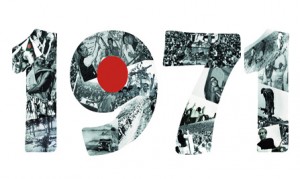Fall of Dacca: What have we learnt from our past mistakes? (Part Two)
Sunday, December 16th, 2012 1:03:12 by Web Desk
The proverbial last straw that broke the camel’s back was Bhutto’s rejection of the 1970 election results which had given Shaikh Mujib ur Rehman’s Awami League a clear cut majority to form the government at the centre.
ZAB’s one after the other statements like “we will break the legs of any one going to Dacca to attend the NA session there”, “Udhar tum idhar humm”, “Anyone going to Dacca should buy only one way ticket as he will not be allowed to return” and “I would rather be a top dog of half of Pakistan than be an underdog of full Pakistan” left little doubt in the minds of Mujib and company who opted for the Civil Disobedience in the province.
Their provincial autonomy stance kept becoming tougher by the day and all negotiations between them and the West Pakistani leaders and the Federal government led by Gen.Yahya himself failed. To quell the civil disobedience the army struck on the night of 25th March 1970, starting an internecine guerrilla war between the military and Mukti Bahani lasting for 8 long months.
On 21st November 1970 – Eid Day – the Indians launched a full-fledged armed attack on East Pakistan which lasted for 26 days of intense fighting for Pakistan army under extremely adverse conditions of (1) being very badly out-numbered in men and material – 3 Indian Corps against One and that too a lame one, under strength and ill equipped, no tanks, very little artillery – only the infantry and the a battalion of Engineers, (2) hostility of the local populace – no army can fight without the support of the civilians of the country, but here what to talk of the support the civil populace was acting as the enemy, supporting the Indians by providing them with all kinds of intelligence and information needed by them, (3) poor communications and logistics – no reinforcements or arms and equipment could be supplied from West Pakistan.
India had stopped the over-flights since February 70 after very cleverly and clandestinely planting the Ganga episode, (4) lack of air cover – the only squadron of the F-86s that we had though inflicted heavy losses on the IAF but could not operate later as the runway of the only military airport Kurmi Tola had been rendered out of service by the Indians bombing it incessantly. If anything, under such impossible conditions, it goes to the credit of the army that it could fight the internal enemy – Muktis – and the external enemy India combined for over nine months in East Pakistan.
In the second half of the year 1971 those in power – both civil and military – seemed to be suffering from a stupor and behaving like silent spectators waiting helplessly for the catastrophe to fall. I distinctly remember Major General A Rahim Khan – later Secretary General Defence, on or around 11 July 1971 while addressing a batch of newly posted two dozen Lt Cols and Majors to East Pakistan saying, “Gentlemen, the entire administration of the province had collapsed. I have made it stand but only on its knees.
Now it will be for you to make it stand and stand it erect.” Having said this the General went on to add, “I have given my word to the Chief (Gen. Yahya) to give me three months for the task, and if I cannot do it, he can — (I murmured under my lip, hang me!, but he went on to say ) he can – replace me.”
I was shocked that the general had equated the stakes simply to his replacement! There would be nothing left in the three months to replace him for!! On another occasion Lieutenant General Amir Abdullah Khan Niazi – the GOC Eastern Command as late as in October 71, before a special briefing to a visiting high powered army team from the GHQ on the latest military situation in East Pakistan, advised his senior staff officers not to discourage the generals from the GHQ by giving them the dismal picture or ask them for more troops.
He quipped, “gentlemen, if they send us more troops – more the merrier, if not – lesser the better”. With the result that the operational military map on the board showed more of ‘green’ pins all over the area than the ‘Red’ pins depicting the area under the control of the Mukti Bahani.
The map should have been clustered with the Red pins all over. The GHQ team returned satisfied about all being hunky-dory in East Pakistan. Similar ‘Sab Achha’ reports kept emanating from various sectors and parts of East Pakistan to West Pakistan, till the water passed over the head. But by then it was too late for any political solution that the likes of Gen. Farman were advocating from the beginning but being too junior in the army hierarchy were not given due importance.
The views in this article are the writer’s own and in no way represent newspakistan.pk’s official editorial policy.
Tags: bangladesh, Berlin, Dacca, East Pakistan, Fall of Dacca, India, Karachi, Major General Rao Farman Ali Khan, Moscow, Muktis, Pakistan, Quaid-e-Azman, Rawalpindi, SheikH Mujib-ur-Rehman, UN, Zulfikar Ali BhuttoShort URL: https://www.newspakistan.pk/?p=36222

















